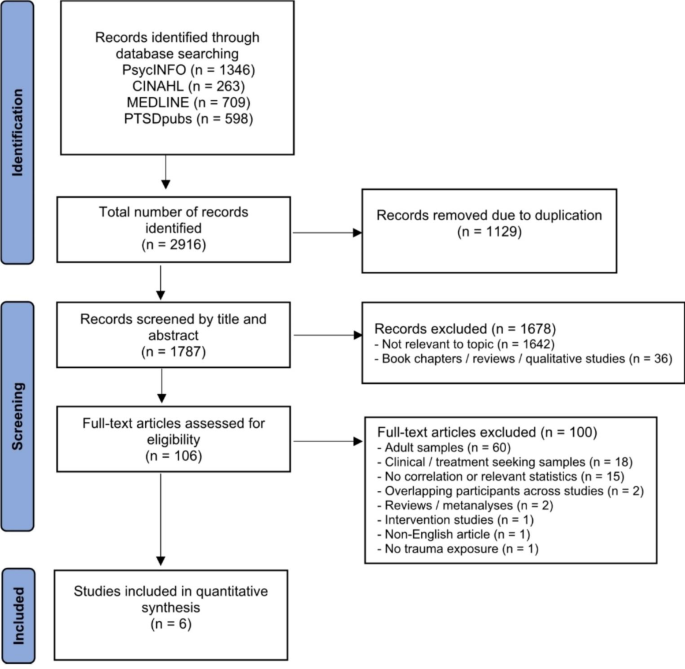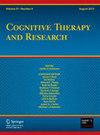创伤暴露儿童和青少年焦虑敏感性与创伤后应激症状的关系:一项荟萃分析
IF 2.8
3区 心理学
Q2 PSYCHOLOGY, CLINICAL
引用次数: 0
摘要
摘要:鉴于儿童和青少年创伤暴露率高,了解创伤后应激障碍(PTSD)的危险因素非常重要。焦虑敏感性与多种焦虑障碍有关,一个新兴的证据基础已经探索了这种结构与创伤后应激障碍之间的关系。本综述调查了暴露于创伤的儿童和青少年的焦虑敏感性与PTSD症状之间的关系大小。方法系统检索MEDLINE、PsycINFO、CINAHL和PTSDpubs等多个电子数据库,共检索到2916条记录,其中6条(n = 1331)符合研究纳入标准,纳入随机效应meta分析。结果焦虑敏感性与PTSD症状之间存在较大的效应量(r = 0.56, 95% CI = 0.47−0.64);研究间存在显著异质性。结论这支持了当前焦虑和创伤后应激障碍的认知模型。讨论了该综述的临床意义、优势和局限性。本文章由计算机程序翻译,如有差异,请以英文原文为准。

Relationship Between Anxiety Sensitivity and Post-Traumatic Stress Symptoms in Trauma-Exposed Children and Adolescents: A Meta-Analysis
Abstract Introduction Given the high rate of trauma exposure among children and adolescents, it is important to understand the risk factors for post-traumatic stress disorder (PTSD). Anxiety sensitivity has been implicated in multiple anxiety disorders, and an emerging evidence base has explored the relationship between this construct and PTSD. The present review investigated the size of the relationship between anxiety sensitivity and PTSD symptoms among children and adolescents exposed to trauma. Method A systematic search on multiple electronic databases (MEDLINE, PsycINFO, CINAHL and PTSDpubs) returned a total of 2916 records, among which six (n = 1331) met study inclusion criteria and were included in our random effects meta-analysis. Results Our results indicated a large effect size (r = .56, 95% CI = 0.47 − 0.64) for the relationship between anxiety sensitivity and PTSD symptoms; there was significant between-study heterogeneity. Conclusion This supported current cognitive models of anxiety and PTSD. Clinical implications, strengths and limitations of the review were discussed.
求助全文
通过发布文献求助,成功后即可免费获取论文全文。
去求助
来源期刊

Cognitive Therapy and Research
PSYCHOLOGY, CLINICAL-
CiteScore
5.30
自引率
0.00%
发文量
52
期刊介绍:
Cognitive Therapy and Research (COTR) focuses on the investigation of cognitive processes in human adaptation and adjustment and cognitive behavioral therapy (CBT). It is an interdisciplinary journal welcoming submissions from diverse areas of psychology, including cognitive, clinical, developmental, experimental, personality, social, learning, affective neuroscience, emotion research, therapy mechanism, and pharmacotherapy.
 求助内容:
求助内容: 应助结果提醒方式:
应助结果提醒方式:


